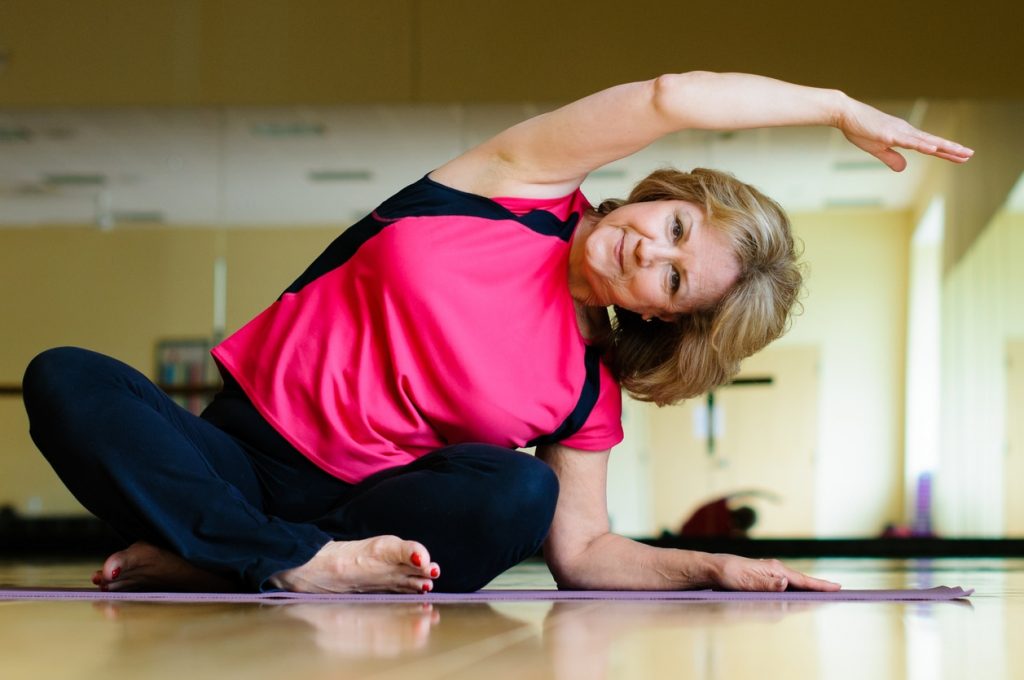Exercise while Living with a Neuroendocrine Tumor
Home » For Patients old » Living with NETs » Exercise
For exercise during COVID-19 outbreak, follow recommended safety precautions.

Exercise offers many benefits to those living with and beyond cancer. It can improve emotional well-being, sleep, body image, and help reduce fatigue and stress.38,39,40 Researchers have also found that exercise may help reduce cancer recurrence and progression in some cancers.30 But the persistent symptoms of neuroendocrine cancer can make it hard to exercise. Sixty percent of U.S. patients said their disease led them to cut back on physical activities.13
Please note
Talk to your doctor before changing your activity level. You may need to make important modifications based on the medication you are taking, surgery you have had, or side effects you’re experiencing. You may want to work with a physical therapist or exercise specialist in developing an activity program. Keep in mind; activity should support your recovery, not set it back.
Starting an exercise program after neuroendocrine cancer
Start small
Slowly and safely add activity to your day. This can be as easy as walking to the mailbox and back. Or, if you are up to it, walking the dog around the block. Set goals and keep track of your progress.
During treatment
- Light activity 5-10 minutes/1-3 times a week
After treatment
- Currently not active: Start 5-10 minutes moderate exercise/ 2-3 times a week, work up to 20-30 minutes
- Currently active: Aim for 30 minutes moderate exercise (can break it down into 10-minute sessions)/5 days a week40, including strength training at least two days per week.32
Clean environment
Take precautions to protect yourself from COVID-19. See these recommendations for visiting parks and recreational facilities.
When your immune system is weakened from treatment (i.e., low white blood cell count) or you have a catheter/feeding tube avoid:
- Public gyms
- Public tennis courts, golf courses
- Group classes
- Public pools
- Busy, crowded environments
Safe environment
Avoid uneven surfaces
- Limit any risk of falls if you have foot numbness (stationary recumbent bike is a safe option)
- Limit sun exposure, protect your skin with a hat, clothing, and sunscreen with SPF 30 or higher
When not to exercise
- If you have chest pain
- If you are anemic (low red blood cell count)
- If you are dizzy, lightheaded
- If you have reduced potassium or sodium in your blood due to vomiting and diarrhea
- If you are actively experiencing pain/nausea/vomiting
- If you have a bone or joint problem that could be aggravated
- If a doctor has asked you to avoid physical activity
- If you have not been cleared for exercise following a surgery
How to get moving
- Pick an activity you enjoy. Make accommodations to maintain your safety. Find a walking buddy. Have a chair nearby for balance — or use a cane or walker. Use any available safety equipment: a helmet for biking or floatation device for swimming or boating. Have a water bottle nearby for hydration. For outdoor activities, use sun protection.
- Keep at it. It’s OK to skip a day here and there if you aren’t up to it. Just get back into your routine as soon as you are able. Over time you will gain strength, endurance, and benefit from moving more. Just take it one step at a time!
Light Activity
(no change in breathing)
- Slow walking
- Slow biking
- Light housework
- Light gardening
- Fishing
- Golf
- Bowling
- Easy resistance exercise such as resistance bands
- Stretching
- Gentle or chair yoga
Moderate Exercise
(Slight increase in breathing. Can still talk easily)
- Brisk walking
- Bike riding with some hills
- Water aerobics
- Dancing
- Ball sports like tennis, softball
- Lifting weights
- Badminton
- Downhill skiing
- Swimming
Vigorous exercise
(Breathing hard, not able to hold a conversation)
- Running
- Race walking
- Aerobics
- Stair climbing
- Soccer
- Basketball
- Cross-country skiing
DAXX/
ATRX
Mutation sdiscovered by NETRF-funded research

Theresa Wittenberg, PA-C, Stanford University
Tips for survivorship. Watch Video
Amanda Woods, ACSM/ACS, CET, ASCM EP-C, and Maigenete Mengesha, PhD, Wellness House
Living Well with NETs Watch Video
Alyson Moadel-Robblee, PhD, Montefiore-Einstein Cancer Cente
ntegrative Oncology & Psychosocial Health. Watch Video
Angela Laffan, NP, University of California, San Francisco
Neuroendocrine wellness panel discussion. Watch Video13National Cancer Institute. Pheochromocytoma and paraganglioma treatment (PDQ®)-patient version. 2017. https://www.cancer.gov/types/pheochromocytoma/patient/pheochromocytoma-treatment-pdq. Accessed October 23, 2018.
30National Institute of Diabetes and Digestive and Kidney Diseases. Zollinger-Ellison syndrome. https://www.niddk.nih.gov/health-information/digestive-diseases/zollinger-ellison-syndrome Accessed October 10, 2018.
32National Cancer Institute. Pheochromocytoma and Paraganglioma Treatment (PDQ®)–Health Professional Version. https://www.cancer.gov/types/pheochromocytoma/hp/pheochromocytoma-treatment-pdq Accessed October 9, 2018.
38National Cancer Institute. Physical Activity and Cancer. 2017. https://www.cancer.gov/about-cancer/causes-prevention/risk/obesity/physical-activity-fact-sheet. Accessed October 31, 2018.
39Oncology Nursing Society. Help Your Patients Get up, Get Moving. https://www.ons.org/practice-resources/get-up-get-moving. Accessed October 31, 2018.
40Rock Cl, Doyle C, Denmark-Wahnefried W, et al. Nutrition and physical activity guideline for cancer survivors. CA Cancer J Clin. 2012;62(4)243-74.
41National Comprehensive Cancer Network® (NCCN). Patient and Caregiver Resources: Exercising during cancer treatment. https://www.nccn.org/patients/resources/life_with_cancer/exercise.aspx/ Accessed October 31, 2018.
